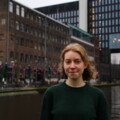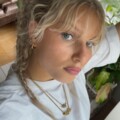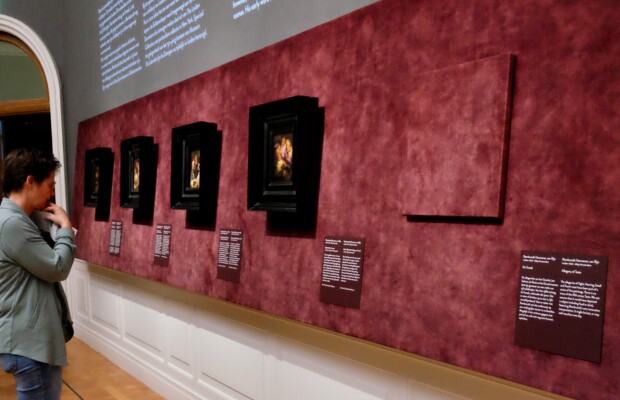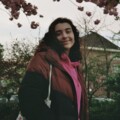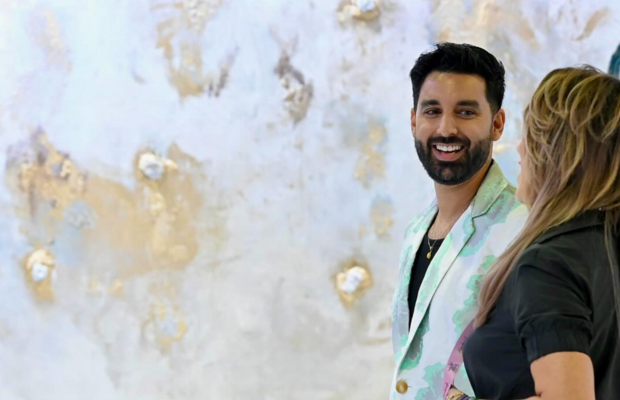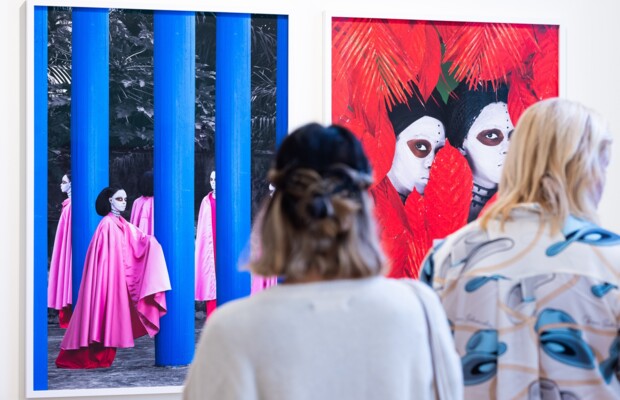On reaching our core through nature
For over 40 years, the Scuola di Scultura in Peccia has dedicated itself to encouraging people of all ages to utilize immersion in nature as a tool for creative production. In this interview, I talked to Almute Grossmann-Naef – Culture Manager and Art Pedagogue – in an attempt to understand her teaching philosophy, creative goals and the school’s ‘Let’s talk about sculpture’ exhibition at Karthause Buxheim, in Germany – now on follow.art until 31st March 2024.

Maria Constantinescu: Could you tell me a bit about yourself and your background?
Almute: I’ve been living here in Peccia for over 23 years now, but originally I am from Germany. Yes, it’s nearly the half of my life that I’m living here in the mountains (laughs). It’s a long time, but it has gone away like this (snaps fingers)...It’s a very special place. [...] Most of the time I’m here in the office, but I am still teaching and working with stone, but, unfortunately, rarely. But maybe you have seen the piece we did for our exhibition as well, our sculpture.
The sculpture referred to is a piece titled “Undae Aeternae”, a symbolic representation of life.
It seems such work could only originate from a region such as Peccia, where, in an isolated mountain valley, Mrs. Grossmann-Naef and her husband teach and create masterful pieces.
Maria: The mention of this so-called ‘Spirit of Peccia’ certainly ought to spark curiosity- What makes the region so special?
Almute: Peccia is located in the heart of Ticino Alps, far away from the mainstream, this ‘away’ offers ideal conditions for immersing yourself in fine arts. The landscape here it’s..is really fantastic - you’re surrounded by magnificent mountains, and if you look into the geological history of this area you will soon recognize that the mountains are formed by Alps folding up and carved out by water melted from glaciers. These are sculptural processes of gigantic dimensions.. (laughs)
At some points the interview was interrupted by a phone ringing, such poorly-timed disruptions are part of Almute’s job.
Almute: Sorry (laughs), sorry! Yes, okay. I think the geology is also really important - we are talking about hundreds and hundreds of millions of years ago, a process of gigantic dimensions and this time horizon, that on one hand makes our lives really unimportant, but on the other it confronts us with our responsibility as we live on this planet.
I think it’s the basis - that if you come to Peccia you are touched in an existential way, and that’s an ideal basis for every artistic work…to achieve authentic expression.
When asked about the way in which the Sculpture School incorporates the region into its teaching, Almute expressed that learning about the local geology is highly valued. “You also feel the spirit of people that have been living here for hundreds of years”, she tells me. “It’s not a simple way of life that you lead here in nature. You always have to find a balance between nature’s strength and your own individual being.”
Maria: What draws you into teaching?
Almute: We are interested in authentic expression. We really are searching for - how do you say it? - to help people get to their own concerns, their own expression. When it comes to the motivation in teaching, or its difficulties…I am personally, I would say, interested in the individual, personal artwork that touches the core of a person’s being. But I am also interested in creating a teaching atmosphere that touches one personally, because I think it is about resonance. Resonance between the artist and the resulting work and on this basis also resonance on the viewer becomes possible. (laughs) If you were to ask me about difficulties, I would think of someone who imitates aesthetically pleasant works by another artist in the context of a lesson. There’s nothing fundamentally wrong with it, but I think it should not stop there.
Maria: I noticed that on your website, the Sculpture School is described as an “offene Schule” (Ger. “open school”). What can you tell me about it, to what extent does it change the way art is taught?
Almute: Indeed, it’s very important to know that everyone can come to our sculpture school. In our courses we have people of all ages, from around 18 to 88, and people of very different backgrounds. It could be that an unemployed person is standing right next to a nuclear physicist, for example (smiles) and both of them are having problems with their stones or with their forms. I think different life perspectives make such encounters interesting for both participants. And everyone can benefit from the other. In this sense, working together is a beautiful symbol of respectful interaction with your fellow man. I think it’s not about our interest in who is the best and the urge to leave the other behind - on the contrary, working on the stones with the material in an artistic way is a general field in which we can make better progress if we support each other. You are not able to handle 100 kg of stone on your own (smiles).
Maria: How do you feel about others (inevitably, perhaps) influencing your creative process?
Almute: It’s the discussion or dialogue with another person (in an authentic way) that influences you every step of the way, in everything that you do. Of course, the artistic language…Our philosophy is to create an open space, and that’s a kind of artistic fuel of life. Here is the philosophy of Joseph Beuys (German artist, 1921-1986), you know, what is a very high responsibility of each person. His quote “Everyone is an artist.” does not mean that whatever you do is an artistic expression; you have to search for an authentic way of artistic expression and interactions…at least I think so. In relation to others you are also asked to be honorable and open, to show your highs and depths.
Maria: I am now curious to learn how sculpture has become such an appealing medium for your creative pursuits. Why choose sculpture and not something different?
Almute: (laughs) Everyone has to choose their own way of expression. I am personally interested in the material, already as a girl I was intensively involved with visual arts. Over the years I have become more and more interested in sensory experiences. The direct contact with the material… A sculpture is always a physical counterpart, a special presence.
Working on a sculpture, especially a stone sculpture, is a kind of physical contact with our reality. I think this brings us in touch with fundamental questions of our being, about time and eternity… and the origin of our lives. To deal with a time horizon that is gigantic - for me it’s a very fascinating work. Seeing the crystals flowing away and glittering under the sunlight when working with a chisel, and seeing the sculpture coming to reality… it’s a kind of process where every unimportant thing is flying away.
Not just about the sculpture, but also about your Being.
The discussion then turned to Undae Aeternae, the exhibition piece that Almute and her husband submitted to Karthause Buxheim. It is a 100 x 80 cm large piece of marble, sculpted to simulate the movement of water. Its abstract nature presented a point of interest to me, which became clearer as she explained the process - first the creation of a tiny model, then the two-day long search for the perfect stone and its ideal face. The question then naturally arose as to the emotional angle of such undertaking.
Almute: Yes, it’s an emotional process indeed. And it is also possible, maybe, that you start with a model and during the process, the stone, as it is a natural material, can break (demonstrates with gestures). Then it is your decision how to go on. Of course, you can use glue - (laughs) we saw a wonderful exhibition once and realized those wonderful sculptures had lines of glue. But you could use this opportunity to change your ideas, it depends on you. Maybe something completely new appears, a completely new language develops.

Maria: In turning to your ongoing exhibition at Karthause Buxheim: what is it that makes that place particularly befitting to show your works?
Almute: It offers ideal conditions for presenting sculptures and installations. Many artists have been inspired by the locations and have selected or created works conceived precisely for the site. The monastic setting offers the possibility to deal with spiritual or philosophical issues as well, very human ones indeed. Psychological highs and lows are also explored… I think it is very special.
With our interview coming to an end, Almute particularly stressed the importance of the exhibition at Karthause Buxheim: “It can be considered a contemporary perspective on the historical framework, of church and religion, that is closely linked to our own cultural basis. We can view this critically, or look to the past with empathy, to give us a better understanding of our present.”

The ‘Let’s talk about sculpture’ exhibition of the Scuola di Scultura Peccia can now be viewed online, at follow.art where it will be available until the 31st of March 2024. Meant to be browsed by those looking towards life, death, or anything in between - it’s an exhibition that, under the direction of the Scuola di Scultura, shows works by teachers, students and graduates.. There certainly is something to be discovered by everyone.

Share the post:
